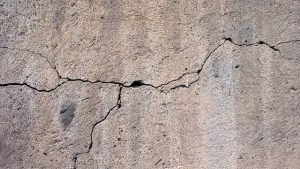Cracking in any type of concrete infrastructure can lead to devastating effects. Although it may be surprising, cracking is not something that only happens over time. If concrete is not properly installed, cracking could happen early on and lead to much larger problems. Cracks in concrete can be difficult to detect without the correct use of GPR. Ensure safety and reduce cracking in concrete infrastructure with these simple tips.
Maintain the Proper Temperature
When installing concrete, the temperature of the air and surface on which the concrete is being installed is critical. To avoid cracking soon after installation, avoid installing concrete on surfaces that are less than 35 degrees Fahrenheit. Also, the temperature difference between the surface and the concrete should not be more than 20 degrees Fahrenheit, unless temperatures are above 50 degrees Fahrenheit for more than half a day.
Block Excess Water
Too much water in concrete mixtures is the most common problem when it comes to differential volume changes that lead to shrinkage and too much cracking. This issue can be solved with chemical agents that reduce water and make working with concrete easier without adding additional water.
The Curing Process
If installing concrete in the colder months, a longer curing period may be necessary. Lengthening the process will help with compressive strength and reduce concrete cracking. Using a curing compound or covering the concrete with damp burlap for at least three days will also protect the concrete during the curing period.
Gradual Cooling
In the warmer months, the cooling period of concrete isn’t as much of a problem, which part of the reason why you see more concrete construction in the spring and summer. In the winter, the cooling period should be gradual. If it is not managed at a gradual pace, the concrete might crack even after the protection period.
Concrete Visions Can Help You See Danger in Your Future
Concrete Visions has over 12 years of experience and expertise in concrete scanning and we know how to detect any problems lurking beneath the surface. We use ground penetrating radar accurately and expertly and are familiar with many other methods that can be used when appropriate like concrete x-ray and electromagnetic conductivity. We are also very familiar with the latest construction safety techniques and train all of our workers to do their work quickly, accurately, and safely. If you would like to learn more about how we can help you, give us a call at (410) 766-2210 or visit us online. For more articles and tips, follow us on Facebook, Twitter, LinkedIn, and Google+.

